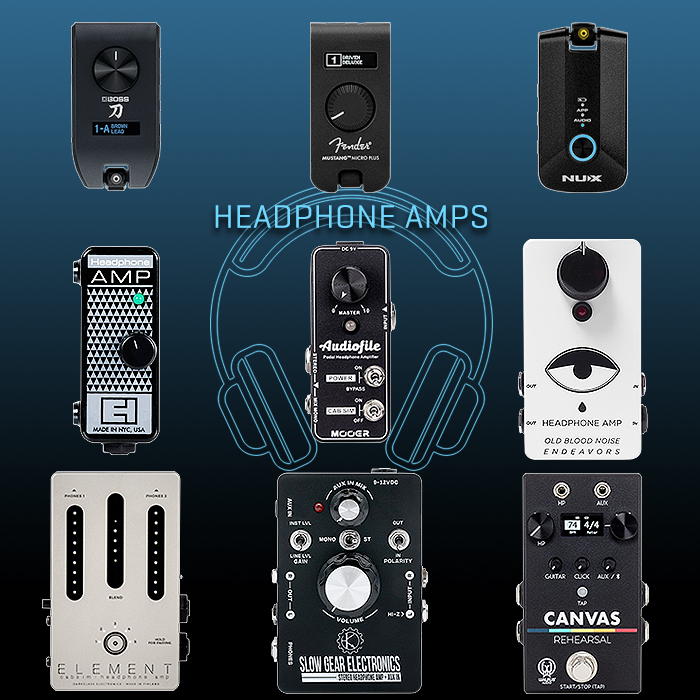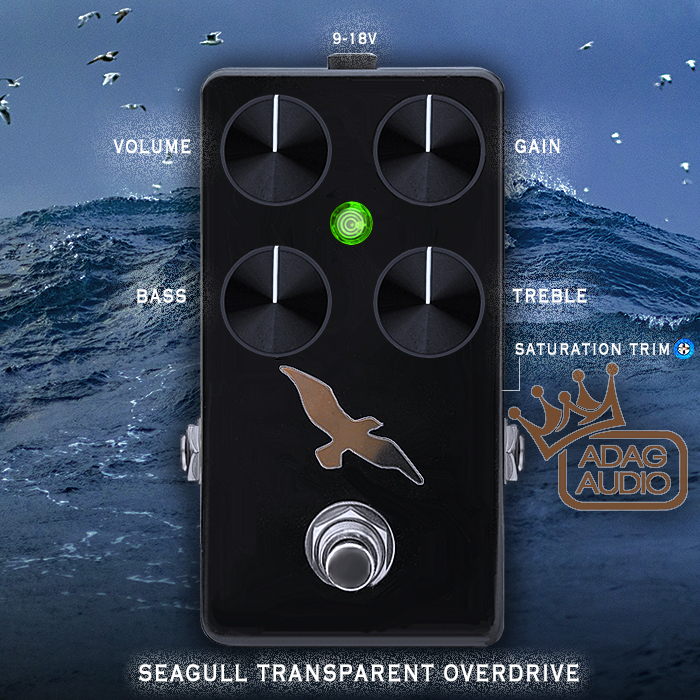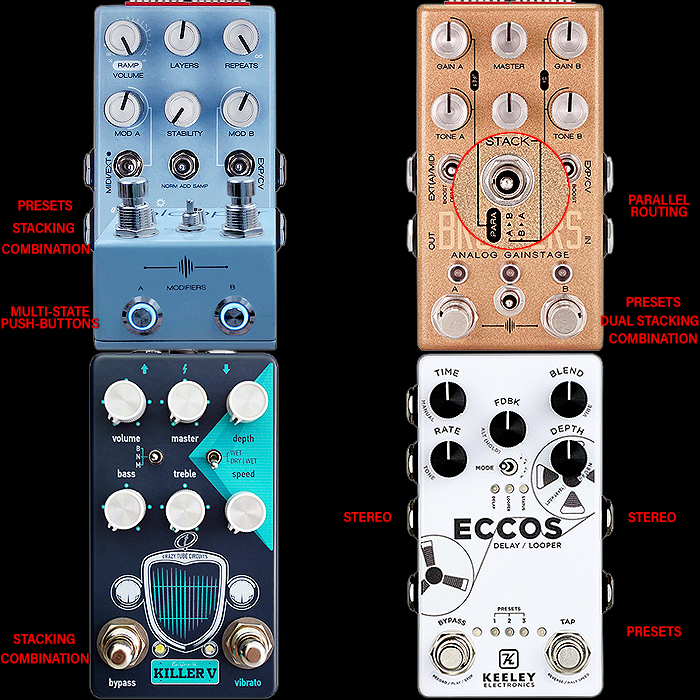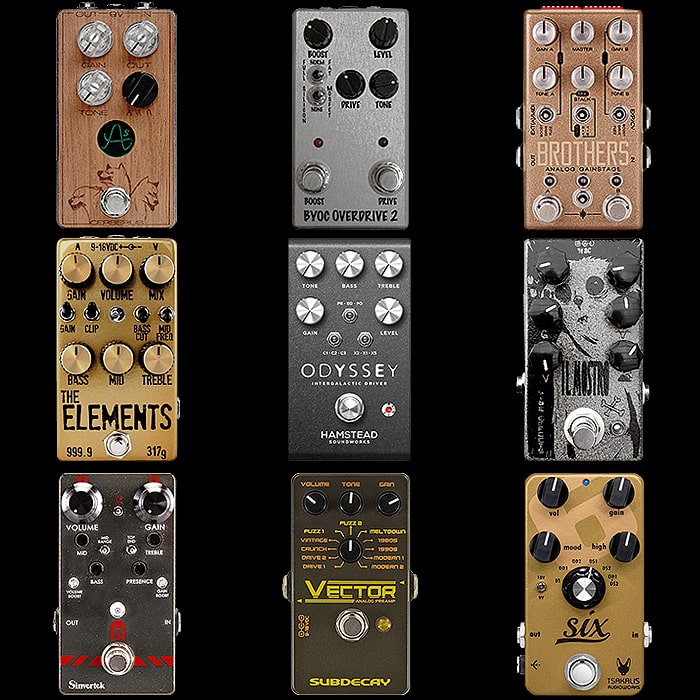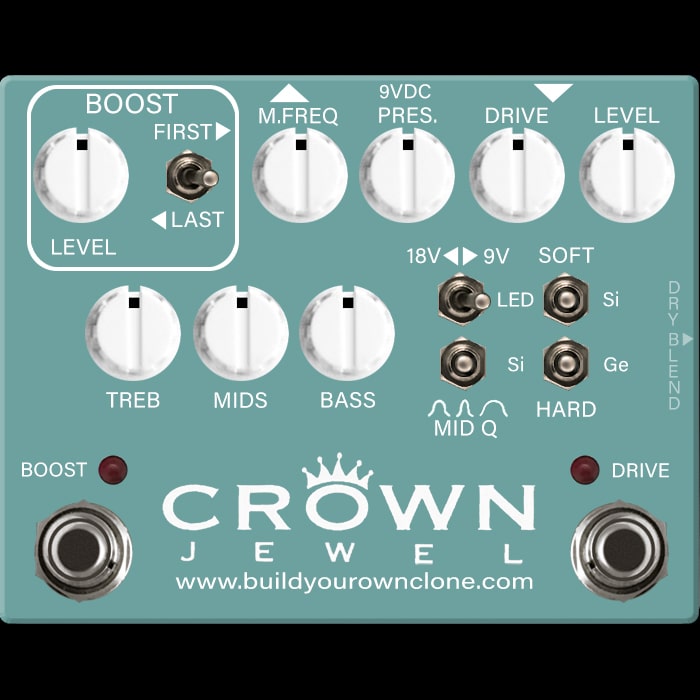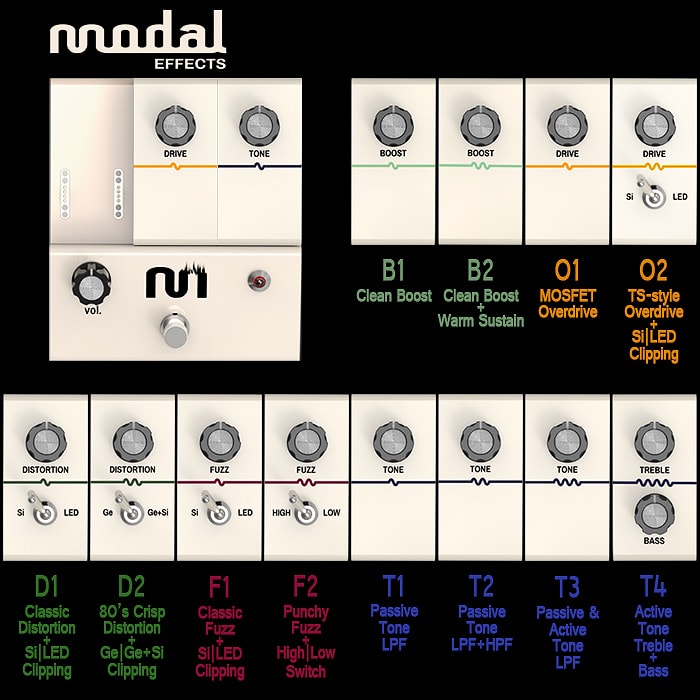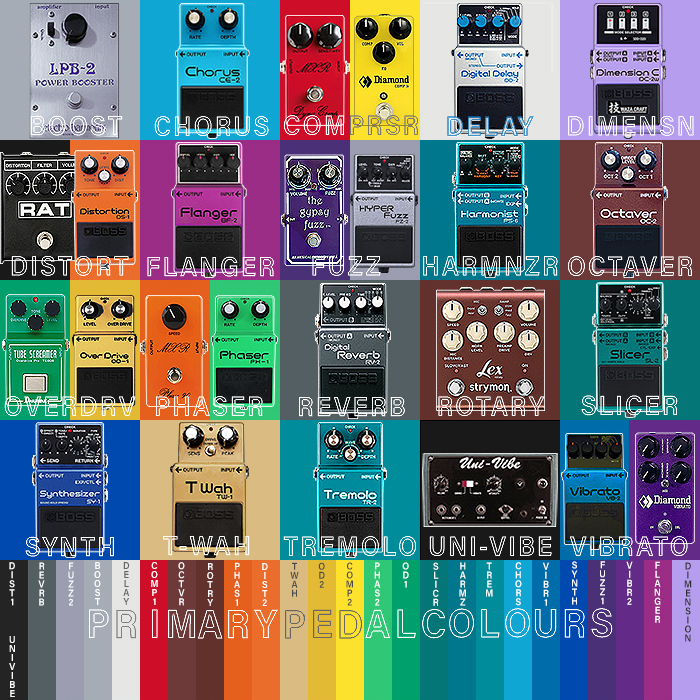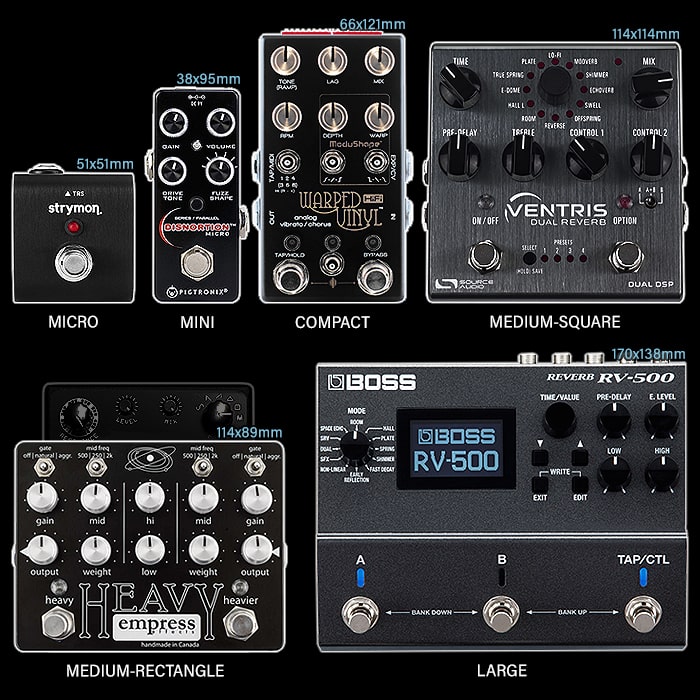The Perfect Compact Guitar Pedal Design - Take 2
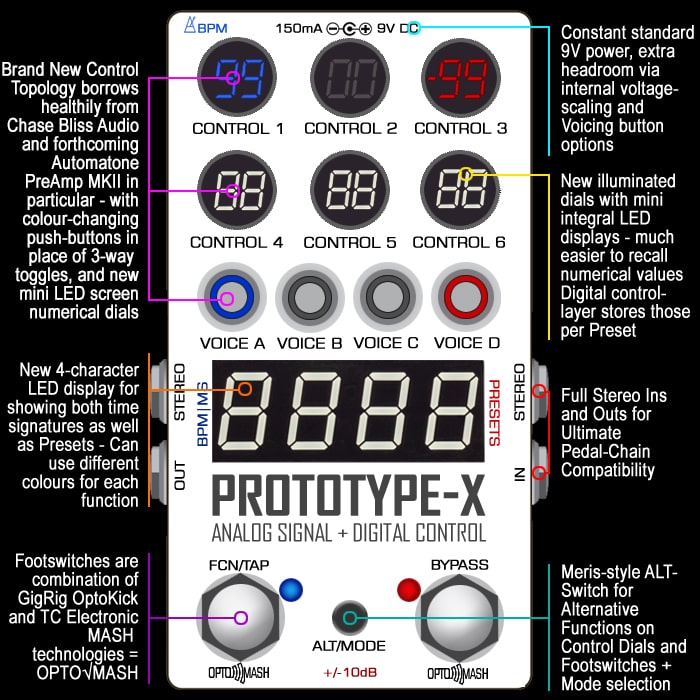
So back in March of 2018 I published my first thoughts on an idealised perfect Compact Pedal/interface design - taking the best of current pedal-design and extrapolating forwards - to include a more intuitive control interface with presets, and my much beloved dual footswitches and alternative/secondary functions. Leaning chiefly on ideas borrowed from Alexander Pedals, Chase Bliss Audio, Fender, TheGigRig, Meris, Stone Deaf and TC Electronic I produced / proposed my first prototype sort of blueprint as below:

Take #1 above
I was heartened later on in the year to see that companies like Red Panda Lab had taken a page from the same playbook, and adopted many of those same features that I was also proposing. Then at the start of this year Joel Korte and Chris Benson moved the conversation on further with their brand new take on automated pedal control topology featuring robotic sliders which changed position as you switched between the onboard presets. Another significant changes was that Joel had abandoned the 3-way toggle switches he usually favourited for multi-coloured semi-flush push-button controls that allowed you to cycle through 3 or more options in a more robust manner. I have received many a pedal with external toggle switches where their fragility was exposed by those no longer working properly - having become damaged in transit - so the flusher multi-push-buttons are a better ergonomic choice that the conventional toggle switches, and so I have used the same on my new version.

Red Panda Particle V2 top left above form my earlier 2019 Trends article
I started thinking generally about control topologies and the ease of memorability / recall / replication in being able to input exact numerical values versus picking an approximate position with a mechanical slider or dial. One of the best things about the more digital pedals is that you can easily dial in and replicate exactly the same values over and over - and if those are able to be saved as presets so much the better.

Original inspiration above - Chase Bliss Audio Warped Vinyl MKII

More recent inspiration - the forthcoming Chase Bliss Audio + Benson Amps Automatone PreAmp MKII

More about Take #2
So think of my own MKII as a now much evolved version of the Chase Bliss Audio topology - with each of the 6 main control / parameter dials having a little screen within it which displays the exact numerical value of the setting applied - you could use different colours to signify different functions and add further symbols +/- for instance for active style tonal controls. I envisaged that it would probably be too much to have all the dials on at the same time - so they could be set to dim/fade from view gradually, or entirely if set to say a '0' or off value. I see you pushing down on the button to display the value, and rotating outer portion in either direction to move the value up or down. On my current Boss 500 series pedals - I find it annoying that those knobs have a defined linear scale and are often pointing in a very inconvenient direction versus the value set on the preset - these would all be infinitely scrolling knobs with a longer push sending the value to '0' and double click setting to mid value or 'indent'! The push function would also prevent the knobs from being accidentally nudged.
I also realised in seeing the Automatone PreAmp MKII that having a main screen was probably best for displaying presets vs rows of LEDs - which several brands already use admittedly including the new Red Panda Particle V2. My thinking is that a 4 character LED / AMOLED display could show preset values as well as say Tap-Tempo BPM / Milliseconds. Depending on what kind of screen is selected here you could even go for a more impressive Teenage Engineering OP-1 style screen with pictograms etc. or you could use a more basic 4 character LED like I in fact selected for the visual.
Other elements remain vaguely the same as for my previous prototype - in that you have an optional BPM sync cable between these pedals if desired, as well as clearly printed values of current draw and degree of decibel range. I have so many pedals that are underpowered on the volume side but some can be 'fixed' by internal trim-pots or upping supply to 18V, while others are just plain underpowered and much less versatile / compatible for that reason.
I have borrowed the 'Alt/Mode' secondary function button from Alexander Pedals, Meris and Strymon sort of - where you can dial in secondary functions on the main dials/knobs and switches.
Finally I have gone for the very best in available footswitch technology combining the brilliant optical frictionless footswitches from Dan Steinhardt's TheGigRig pedals, with TC Electronic's pressure-sensitive MASH sensors - giving you unparalleled utility out of those controls - with Rainger FX Igor-style control through both or either footswitch. So they can be used in combinations of pressure, timing and multiple presses - independently and in combination. Most likely adapting the dual press from Stone Deaf for switching between presets.
Again a fundamental element of these pedals is to operate like Chase Bliss Audio pedals do - with as much of the actual internal electricals and electronics fully analog in signal path, with simply a digital control interface on top to aid switching, presets and manipulation of the core analog engine - much in the way a modern motorcar functions to control a mechanical combustion engine with a digital computer engine-management control layer.
The idea is that this type of pedal is more versatile, more powerful and easier to use overall - with better visual signifiers and better means to replicate and maintain in posterity your favourite achieved tones and settings!
Even though I have a scientific mindset, I am operating rather black-box on these prototypes as I don't have the engineering knowledge or facilities to fully realise such a pedal. This is all really just for the journey and the discussion - the endeavour to imagine and build a better pedal. I know some will be put off by the more digital nature of the look of this pedal - which is veering closer to 'calculator' territory, but there are some genuinely smart innovations at heart here - although it is unlikely that all of those will see light of day in exactly this manner or form.
There are lots of really clever pedal builders out there with fantastic R&D facilities - so I don't doubt that we will see something of this ilk sometime soon - perhaps as soon as within the next 12-18 months. Before people leap into action to tear into my fevered imaginations - just remember how much functionality your very diminutive smart phone currently carries and conveys. Circuitboard design has come a long long way - and if you look at the work of geniuses like Guillem Vilademunt and what they are doing with smaller mini enclosures, it should not be too much of a stretch to be able to engineer something of the magnitude I have illustrated above. From a player perspective it carries lots of those features I find to be indispensable on such a device - I look forward to one day seeing something materialise along similar lines!
Recent Usability Advances

One of my pet peeves with pedals is internal dip-switches and trim-pots. I understand them for master volume or gain controls - on a set-and-forget basis, but deploying such for tone-sculpting or voicing options just seems lazy and plain dumb-ass really.
I am much relieved that the recent pedals from Xotic Effects and Ibanez in fact have formally internal style dip-switches and trim-pots fully accessible on the exterior. I have all 3 previous Mini Xotic pedals in their Alchemy Audio Johny Balmer modified editions with external toggle switches - so that I can make best use of those pedals.
I recently acquired the brand new Red Witch Fuzz God III pedal - which has 6 internal dip-switches (poorly marked and explained I should hasten to add) which mostly serve the purpose of tone-sculpting. So you uncouple power for safety and remove back-plate every time you tweak one of those dip-switches which makes it a major pain in the ass to dial in that pedal - and precludes you from using said pedal in a versatile manner - the same can be said of the Keeley Red Dirt Mini.
Plastic dip-switches and trim-pots are not the solution though as these wear out over time - they need to be far more robust components - so I feel the evolution of the multi-colour / multi-state push button - as deployed on my Take 2 and the Automatone are the longer-term solution.
I have stated many times that I am an avowed pedal tweaker - I don't mind putting in the time - as long as it's not being wasted, and that there is an easy way at the end of the day to preserve and maintain all that effort and help it be used with variety and diversity.
In may ways per product design - most of these pedals are really very primitive objects - just look at the trajectory of the smartphone over a much shorter period - with many more components and much tighter tolerances. Lots of pedal types are barely in their infancy really, and many haven't really moved on from the most basic templates that were there at the very start of the pedal / portability / versatility revolution some near 60 years ago.
I hope to see many more innovations and usability advances in the forthcoming months and years. The new Keeley stereo compact format platform looks interesting, but I still feel it has a few generations to go to catch up with the state of the art technology that is already available.
Final Thoughts
There are many that hate any degree of progress and are still delighted to play those hideously over-sized effects pedal of yore - those early edition fuzz pedals which look like pet coffins. For me though those are just impractical and too basically engineered for our modern every day needs.
We want a smorgasbord of tones and textures - and we're seeing ever bigger pedalboards with ever more flavours. To be able to be more versatile - we need pedal-size to be compact and versatile so we can accommodate more of those flavours in their very best possible format - which is the hybrid of analog and digital as far as I am concerned.
I still love all my analog modulations - particular in Chase Bliss Audio formats - I just wish those were stereo output and had more easily foot-switchable presets - those thoughts were at the start of this voyage of discovery. And I have endeavoured to investigate different possibilities for getting the most out of the compact format enclosure - which I believe is the perfect compromise of shape and form-factor. And when deployed in the above format in particular - can accommodate pretty much any and every flavour of pedal - with some further variations and extrapolations of course.
Alexander Pedals, Chase Bliss Audio, Red Panda Labs, Sinvertek and Strymon even are all doing really clever things in mixing up different topologies - but I feel a lot more work can be done still.
Of course the pedal still has to sound fantastic - but just like Apple revolutionised the concept of what a mobile phone should be and how it should look - we have yet to go through that major step-change for pedals. For console-type design interfaces I am not really a fan of all touch-screen elements - like for instance the forthcoming Poly Effects Digit and Morph pedals - I much prefer having settings activated and actuated via physical hands-on dials!
Here endeth the current extrapolation - I will likely do a Take #3 in a year's time - will be cool to see what changes and innovations we have in our hands by then ...










